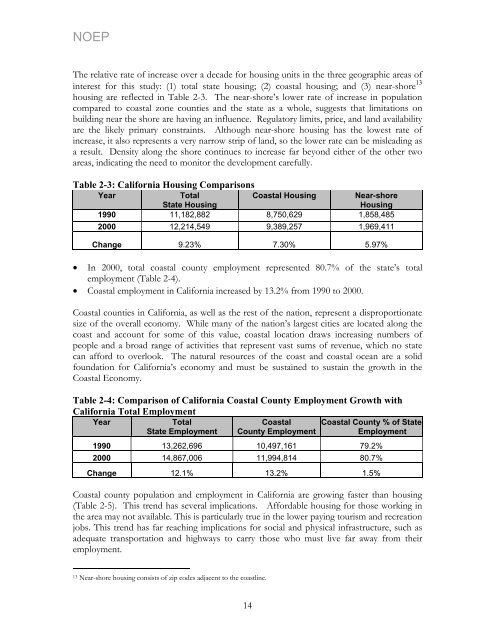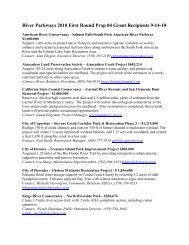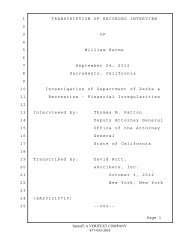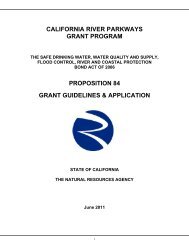California's Ocean Economy - California Resources Agency - State ...
California's Ocean Economy - California Resources Agency - State ...
California's Ocean Economy - California Resources Agency - State ...
Create successful ePaper yourself
Turn your PDF publications into a flip-book with our unique Google optimized e-Paper software.
NOEP<br />
The relative rate of increase over a decade for housing units in the three geographic areas of<br />
interest for this study: (1) total state housing; (2) coastal housing; and (3) near-shore 13<br />
housing are reflected in Table 2-3. The near-shore’s lower rate of increase in population<br />
compared to coastal zone counties and the state as a whole, suggests that limitations on<br />
building near the shore are having an influence. Regulatory limits, price, and land availability<br />
are the likely primary constraints. Although near-shore housing has the lowest rate of<br />
increase, it also represents a very narrow strip of land, so the lower rate can be misleading as<br />
a result. Density along the shore continues to increase far beyond either of the other two<br />
areas, indicating the need to monitor the development carefully.<br />
Table 2-3: <strong>California</strong> Housing Comparisons<br />
Year Total<br />
Coastal Housing Near-shore<br />
<strong>State</strong> Housing<br />
Housing<br />
1990 11,182,882 8,750,629 1,858,485<br />
2000 12,214,549 9,389,257 1,969,411<br />
Change 9.23% 7.30% 5.97%<br />
• In 2000, total coastal county employment represented 80.7% of the state’s total<br />
employment (Table 2-4).<br />
• Coastal employment in <strong>California</strong> increased by 13.2% from 1990 to 2000.<br />
Coastal counties in <strong>California</strong>, as well as the rest of the nation, represent a disproportionate<br />
size of the overall economy. While many of the nation’s largest cities are located along the<br />
coast and account for some of this value, coastal location draws increasing numbers of<br />
people and a broad range of activities that represent vast sums of revenue, which no state<br />
can afford to overlook. The natural resources of the coast and coastal ocean are a solid<br />
foundation for <strong>California</strong>’s economy and must be sustained to sustain the growth in the<br />
Coastal <strong>Economy</strong>.<br />
Table 2-4: Comparison of <strong>California</strong> Coastal County Employment Growth with<br />
<strong>California</strong> Total Employment<br />
Year<br />
Total<br />
Coastal Coastal County % of <strong>State</strong><br />
<strong>State</strong> Employment County Employment<br />
Employment<br />
1990 13,262,696 10,497,161 79.2%<br />
2000 14,867,006 11,994,814 80.7%<br />
Change 12.1% 13.2% 1.5%<br />
Coastal county population and employment in <strong>California</strong> are growing faster than housing<br />
(Table 2-5). This trend has several implications. Affordable housing for those working in<br />
the area may not available. This is particularly true in the lower paying tourism and recreation<br />
jobs. This trend has far reaching implications for social and physical infrastructure, such as<br />
adequate transportation and highways to carry those who must live far away from their<br />
employment.<br />
13 Near-shore housing consists of zip codes adjacent to the coastline.<br />
14







